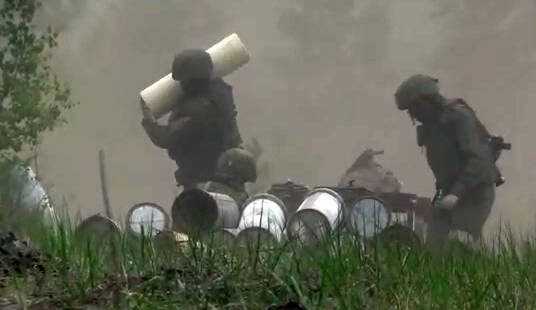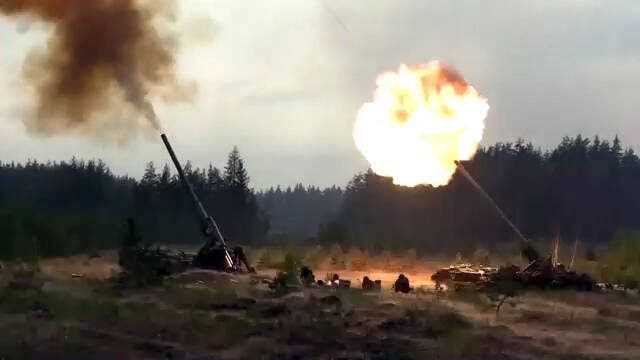The Russian General Staff ruthlessly relied on artillery fire. With the “barrage of fire” the Russian army is making slow but steady progress in the Donbass.
A Russian propaganda video shows the use of the Malka self-propelled howitzer. An indication that the Kremlin in the Donbass relies on the tactic of the “roller of fire”.
A Russian gunner explains the mission of his gun crew: “We’re pounding on the enemy’s troops, weapons and fortifications.” He speaks in a video uploaded by the Russian Defense Ministry on Friday. It shows the use of self-propelled howitzers of the “Malka” type in Ukraine. The original version of this gun with a caliber of 20.3 centimeters dates back to the Cold War. According to Russian information, the latest development of the “Malka” can fire around 50 kilometers away.
It is no coincidence that the Kremlin’s propaganda advertises the firepower of its own artillery. The available news about the fighting in the Donbass suggests that the Russian troops are relying on the psychological effect of the «barrage of fire»: a brutal but proven approach by the Red Army: «It is a continuous curtain of fire that gradually from one phase line to another in front of the attacking troops,” describes a US Army manual on Soviet warfare the tactic of the barrage of fire.
fire and movement
This form of use of artillery in attack originated in the First World War. The French and German leaders wanted to bring movement to the frozen western front. The Red Army used the “fire roller” during World War II to push the Wehrmacht back westward kilometer by kilometer. The advancing troops had to move dangerously close to the artillery fire in order to be able to move up as quickly as possible.
Even in Soviet times, the “fire roller” was no longer practiced in its most brutal form. The “successive fire concentration” focuses on specific targets, instead of laying as much fire as possible on the next phase line of the attack with practically no observation. Nevertheless, the principle still works the same: the enemy is shot at until an advance with infantry or tanks is possible: fire and movement, slowly but surely.

Russian artillerymen reloading the «Malka».
Russian troops appear to be acting in a similar way in Donbass: a week ago they captured Popasno hill in the southern sector of the front, on Friday the fall of Liman was reported a little to the north-east. The pincers around the eastern Ukrainian city of Severodonetsk are gradually beginning to close. At least three Ukrainian brigades could be trapped. At the same time, the Russian army shelled the defenders’ supply lines in the depths of the area, approximately at the Bakhmut junction.
race against time
The deadlock in the war in Ukraine appears to be over. The attackers have regained the initiative with their change of tactics. The Prussian strategy philosopher Carl von Clausewitz provides a possible explanation: “We see that the concept of equilibrium cannot explain the standstill, but that it boils down to waiting for a more favorable moment.”
Although the Russian army started its offensive with far too weak a force, it now wants to make up for the imminent disgrace with ruthlessness. It remains a race against time for Kyiv to regain control of the situation with sufficient offensive weapons. However, the wait-and-see attitude of the Western European governments does not bode well – and could ultimately help the tactic of the barrage of fire to succeed.
